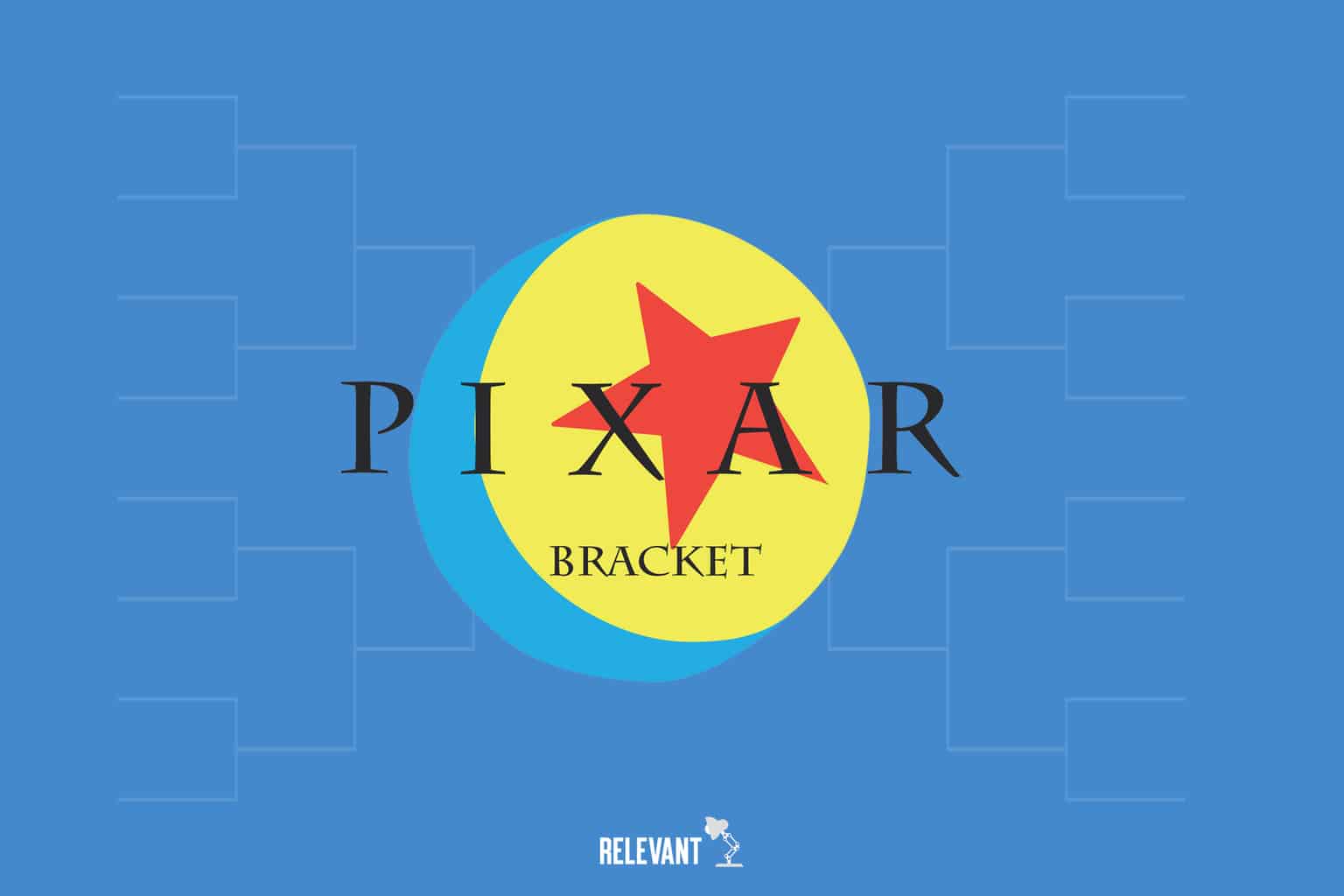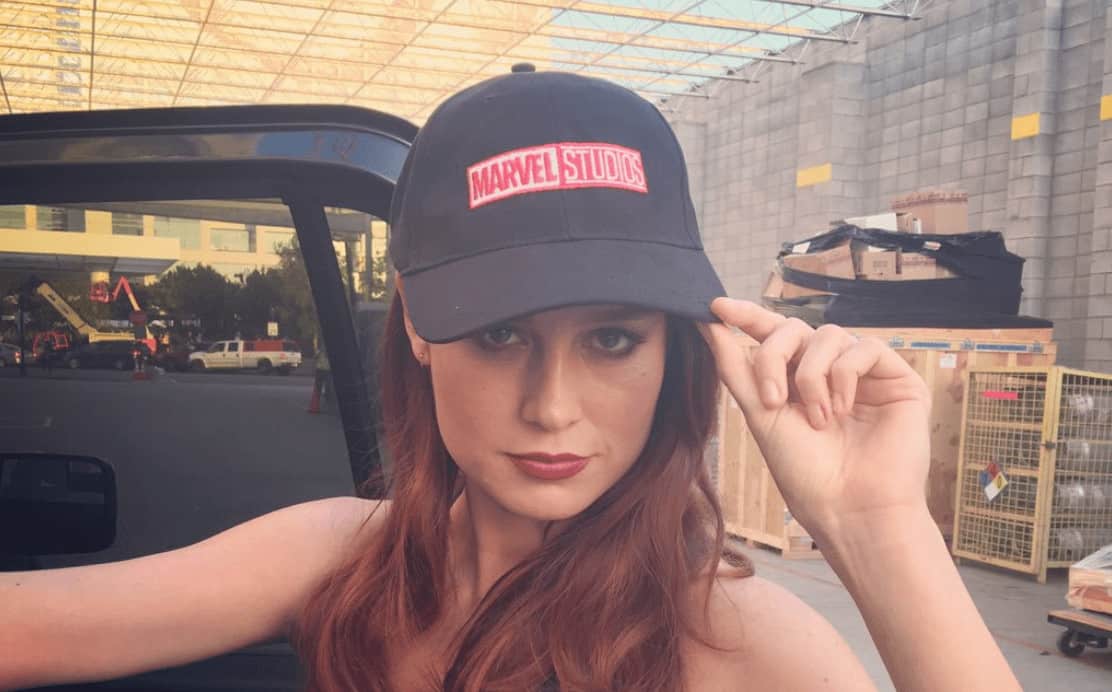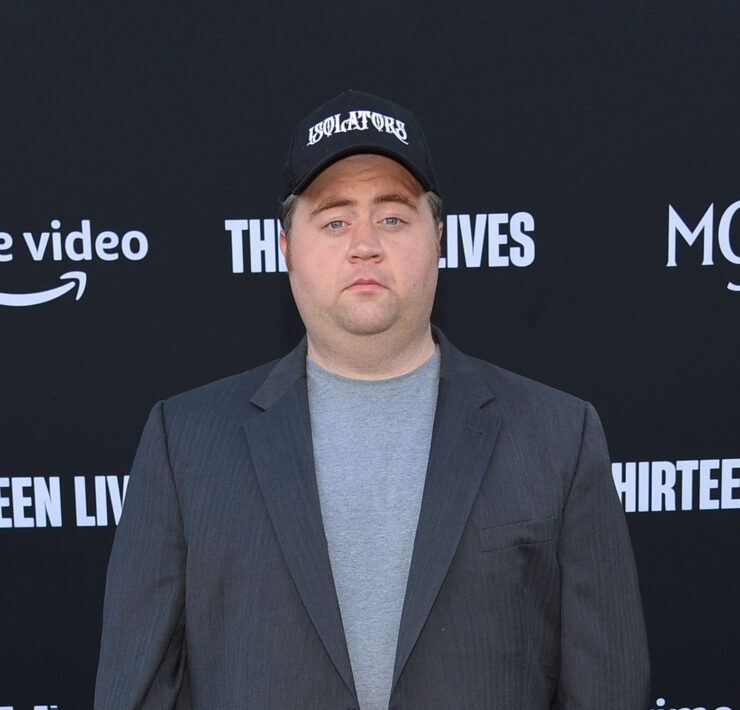
The RELEVANT Pixar Bracket: Elite Eight
In this round, writers engaged in three-round mini debates, taking turns attacking the other movie and defending their own. Jon Negroni presiding.
[bsc_tabs type=”tabs” nav=”vertical”] [bsc_tab title=”Coco vs Monsters, Inc.”] Coco VS. Monsters, Inc.Chris Lopez vs. Cooper Watt
Lopez: Pixar loves them a classic hero-to-villain plot twist: Stinky Pete, Lots-O’-Huggin Bear and Waternoose. Filmmakers rest a lot on these “reveal” moments, and Coco offers the most unexpected and sinister reveal when Señor de la Cruz shows his true colors, making the resolution all the more urgent and satisfying.
Watt: There’s big heart in both of these flicks, but the comedy of Mike and Sulley’s relationship pushes Monsters ahead. As villains go, De La Cruz was good, but I never believed he would meet Miguel’s expectations. Waternoose, on the other hand, was a twist I didn’t see coming. “I’ll kidnap 1,000 children before I let this company die” is just as sinister and far more quotable.
Lopez: But De La Cruz throws his alleged grandchild in a dungeon! What’s more, he steals musical credit in “this” life and basks in unmerited glory in the afterlife. De La Cruz’s toxic narcissism inverts the Latin American/Latinx tradición of legacy, and when Miguel’s at rock bottom, he realizes he was doing the same. This all sets up for Coco’s profound personal and familial transformation.
Watt: Okay, Monsters Inc. admittedly can’t boast the same profound message, but it can boast in the comedic chops of Crystal and Goodman. No Pixar film has a funnier duo, and the slithery Randall is a brilliant foil opposite them. What Monsters Inc. lacks in social depth, it makes up for with a run of laughs from here to the Himalayas.
Lopez: Monsters offers up inter-character dynamics and compelling fraught friendships, but plenty of Pixar flicks offer that, too. Coco tells a different story because it begins on a different cultural starting point, then demonstrably cares about remaining true to that culture in its sound design and visuals. Monsters hilariously iterates what audiences know and love, but Coco dares to offer something audiences need to experience more.
Cooper: I’m thankful for the cultural experience of Coco, but this is a take battle so I’ll go there: Coco is just Pixar’s version of Footloose with music instead of dancing and no Kevin Bacon. Don’t suffer from recency bias, we don’t know yet if Coco will hold up as a classic like Monsters. Between them, I’m reassembling the wood chips and opening the Monsters door every time.
JUDGE JON: I personally believe the “villain twists” in both these movies is obvious. Regardless, what a match. Chris framed a lot of his argument around how important the villain is, and he managed to win this point by tying it to how Coco is culturally important. This was a one-two punch that Cooper never fully recovered from. Our Monsters stan did well to throw out a surprise hit with Coco’s recency bias, but Chris made the stronger case in the end.
VERDICT: COCO

Josh Pease vs. Cooper Watt
Pease: Congrats on making the second round, Cooper. I’m sorry your run ends here. Toy Story 3’s notable achievement is how it captures the melancholy of “putting away childish things.” Inside Out does the same thing, but better. It’s as though it saw Toy Story 3 and said “let’s build a movie around that feeling.”
Watt: That’s laughable. Toy Story 3 is a thrill ride, with the humor to match its somber message about letting things go. Inside Out doubles down on being sad with half the fun. I want the perfect balance of Toy Story 3—these are kids’ movies after all.
Pease: I’ve watched Inside Out approximately [runs tabulations] 83,000,000 times due to my 3-year-old, and you’re underselling how funny it is. Anger and Fear are both hilarious, and the cutaways to the emotions in other characters’ heads are more clever than anything in Toy Story 3. Remind me of the classic funny scenes from Toy Story 3? All I remember is the existential dread.
Watt: The train heist, Spanish Buzz and the Barbie and Ken dynamic, to name just a few. But the real joy of Toy Story 3 is watching our beloved characters go up against the sinister Lots-O’-Huggin Bear. From Lots-O’s tragic backstory to his evil turn, he sets up an incredible conflict. Sign me up for that journey over Riley’s quest to not become morbidly apathetic and depressed in Inside Out.
Pease: Oh man, you’re missing how Inside Out is about how sadness, and the empathy that springs from it, is a vital part of the human experience. Tell me our world wouldn’t be a better place if a certain man in Washington had been hugged by his parents and told “we’re sad too” at some point. Toy Story 3 captures a feeling, but Inside Out explains why you’re feeling it. In 50 years, it’s the one we’ll still be talking about.
Watt: Toy Story 3’s balance between learning to hold onto what you love and learning to let things go holds equal weight to the value of sadness. Our established relationships with the characters built up over the Toy Story trilogy make us care that much more about their story. Inside Out is an important movie, but for rewatchability/enjoyability from start to finish, my money is with Toy Story 3.
JUDGE JON: Each of these guys matched the other blow for blow. Cooper had a clear advantage by offering the last word, so it came down his final statement against both Josh’s last word and opening statement. Josh did well to explain how Inside Out builds on the same feeling Toy Story 3 set forward, but he makes a sly move in his final point. When he grants Toy Story 3 strong emotion, but then argues how Inside Out evolves those emotions, Cooper couldn’t give much of a rebuttal.
VERDICT: INSIDE OUT

Lesley Crews vs. Jaz Persing
Crews: Brave gives us a feminist twist on the traditional princess narrative. Not only is Merida unimpressed by her male suitors chosen for her, she proves herself superior with her preeminence and archery skill. She gives females an internal feeling of power, while the only hint at feminism Toy Story offers us is Little Bo Peep—a supporting character with no power whatsoever. Plus, does Toy Story offer Scottish accents? I think not.
Persing: I can forgive Toy Story there because it came out in 1995, and Jessie’s addition in Toy Story 2 made for strong restitution for the franchise. But besides token female representation and Scottish accents, what else does Brave offer? The dialogue’s weak, and the plot takes us abruptly into Freaky Friday land. I would have much rather seen Merida take on something with more emotional resonance. I’d rather have Toy Story’s heartfelt, complex male characters than Brave’s “feminist” plot that doesn’t deliver much more than box-checking.
Crews: Fair, but while Toy Story focuses on the adventures of toys when their owner is away, Brave offers a focus-on-the-family aspect. The relationship that Merida develops with her mother makes you appreciate your family in a way that, once the movie ends, makes you immediately want to hug your mom.
Persing: But family’s more than flesh and blood. I’d argue that while Brave presents a more traditional depiction of family (albeit with some animal hijinks), Toy Story is just as much a story about sibling rivalry than anything else. But by telling that story with more dexterity and imagination, from the perspective of the toys, there’s a more lasting impact than Brave’s obvious approach.
Crews: Yet unlike Woody and Buzz, Merida gives us the central message of making your own way in this world, and the capacity to change your fate by yourself. When you can reconcile who you are with what’s expected of you, that’s brave. And that sense of empowerment isn’t proposed in Toy Story.
Persing: That’s definitely Brave’s intended message, but with one-note characters and a plot that feels recycled, that message of empowerment just doesn’t stick the landing. Toy Story is about learning to rise above insecurity and embrace new people—we learn that message through Woody’s jealousy of Buzz—and toys or not, it’s a far more human delivery of the message.
JUDGE JON: Jaz offered a knockout blow with her first point. She turned the point around on Lesley by going hard after Brave’s flaws. Lesley put up a good fight, but she lost me with her last point about changing your fate alone, which undercut her argument about family. She fought hard, but Jaz went for the jugular and stayed on top.
VERDICT: TOY STORY

Josh Pease vs. Abby Olcese
Pease: I’m terrified to debate you, Abby, after the scorched earth you left behind last round, but I’ll start here: My 3-year-old will watch The Incredibles from beginning to end because the pacing is—ahem—incredible. WALL-E is packed wall-to-wall (…E. I’m sorry, I can’t stop) with good moments, but drags in the middle.
Olcese: The Incredibles is formidable (Brad Bird v. Andrew Stanton in the director category is a showdown for the ages), but let’s talk economy. The Incredibles has flash and style, but WALL-E’s first half introduces an ingenious setting and a charming lead without any dialogue. It’s all showing, no telling, and that, my friend, is skill.
Pease: I agree about WALL-E’s first half, but we’re talking the better overall film. WALL-E’s batteries fade 30 minutes in, while The Incredibles keeps dashing forward. The Incredibles isn’t as high-concept as WALL-E, but it does everything right. There’s no wasted scene. It’s visual aesthetic is retro-future cool. And its composition is better than 90% of anything in theaters right now.
Olcese: You want shot composition? How does WALL-E scooping up a handful of stardust strike you? The movie may lose some steam once the humans show up, but we also acquire a cast of misfit robots, each with a distinct personality. Also, I’d argue WALL-E has a clearer, stronger message than Incredibles does, but I’ll save that for my closer.
Pease: Oh shoot. DON’T DO ME LIKE YOU DID TOY STORY 2! WALL-E’s message may be clearer, but it’s also easy—conservation is important. The Incredibles, in addition to being a surprisingly dark family drama (that yelling match when Bob comes home!), is struggling with a paradox we still face: How do we level out societal privilege without limiting individual giftedness? The Incredibles’ message isn’t as clear, because it’s wading in a moral ambiguity WALL-E isn’t interested in.
Olcese: That’s the best explanation of The Incredibles’ central dilemma I’ve heard. But I don’t think that message is consistent. Are we all capable of greatness, or should we leave that to those “more gifted?” Bird’s perspective is cagey at best. From moment one in WALL-E, we receive a strong, impactful statement, with gorgeous images, even if the delivery is sometimes flawed.
JUDGE JON: Abby struggled with Josh’s point about WALL-E’s pacing, so her only hope was focusing on the message of these movies. Josh surprised me with his extremely valid point that WALL-E has an “easy” message, but Abby laid down fire with her point about Bird’s inconsistency. This one had to come down to volume of arguments. Abby earns points for bringing up WALL-E’s incredible opening half, which Josh concedes, but Abby also threw out a few other strong points about imagery and characters, and I didn’t hear much more from Josh about anything besides pacing, message, and skill in the filmmaking, which Abby met him blow for blow on.
VERDICT: WALL-E
























